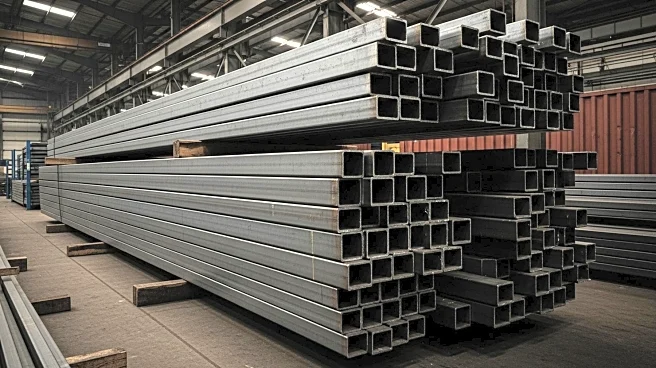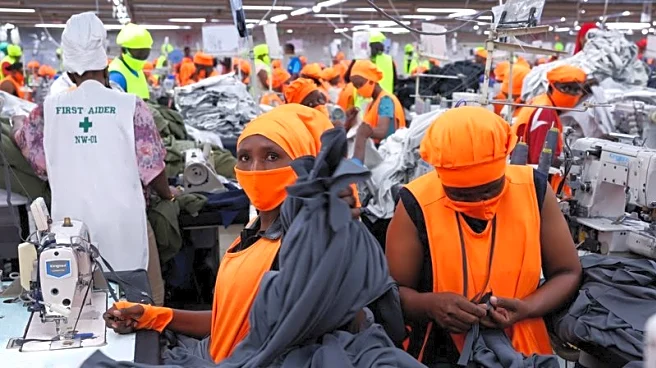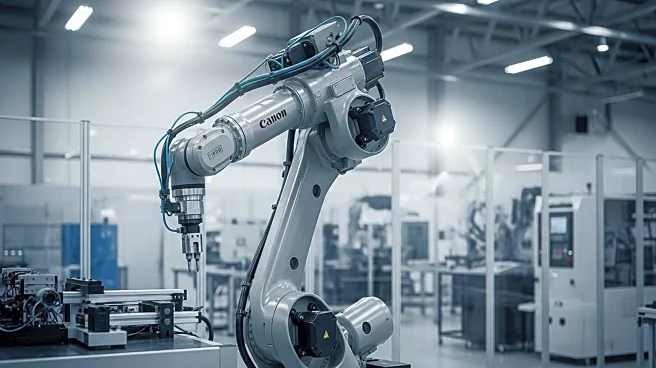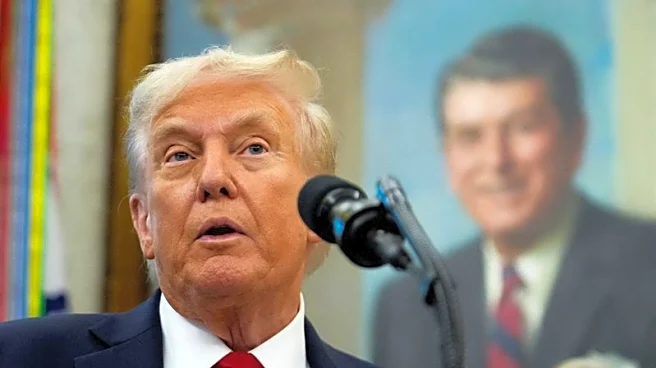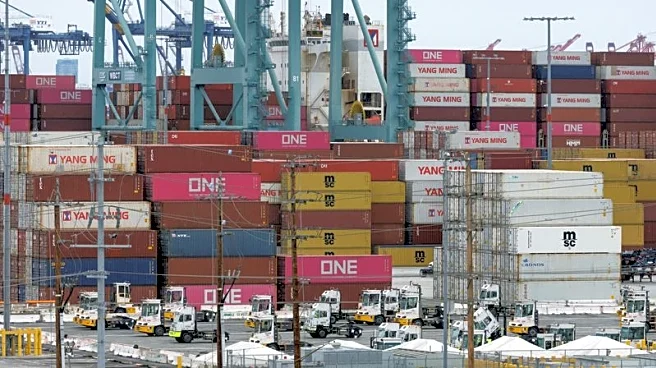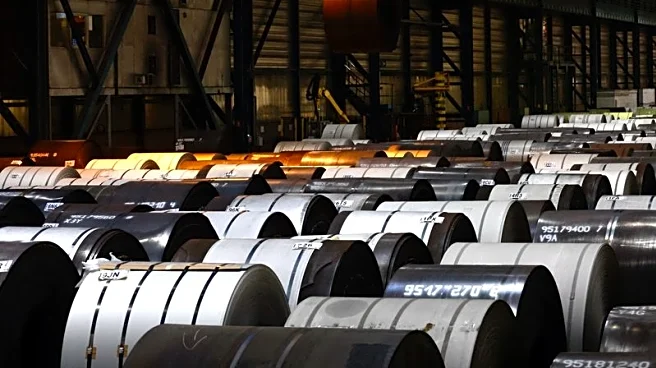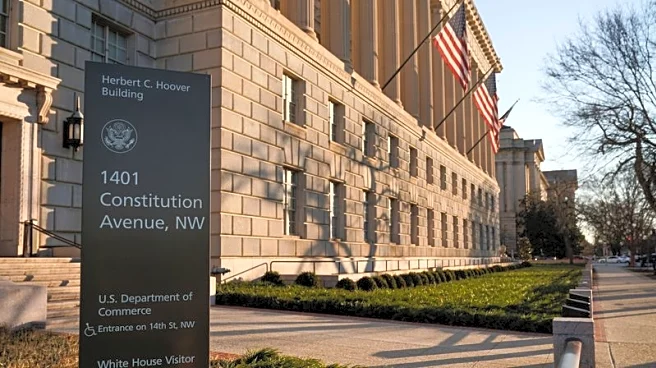What's Happening?
The European Commission is set to propose a significant reduction in steel import quotas and an increase in tariffs on excess volumes to 50%, aligning with similar measures imposed by the United States and Canada. This proposal comes as part of a new package for the steel sector, scheduled to be unveiled on October 7. The current EU steel import safeguards are due to expire in mid-2026, and the proposed changes aim to address the declining demand and excess capacity, particularly from subsidized Chinese factories. The EU is also exploring potential aluminum safeguards and export duties on scrap metal. The new system could facilitate a deal with the United States to replace the existing 50% US tariffs with a quota system, as outlined in a US-EU agreement reached in July.
Why It's Important?
The proposed changes by the European Commission are significant as they reflect ongoing global trade tensions and efforts to protect domestic industries from foreign competition, particularly from China. By aligning tariffs with those of the US and Canada, the EU aims to safeguard its steel industry against excess capacity and subsidized imports. This move could have broader implications for international trade relations, potentially leading to further negotiations and adjustments in trade policies between major economies. The steel industry, a critical component of manufacturing and infrastructure, stands to benefit from these protective measures, while countries exporting steel to the EU may face increased barriers.
What's Next?
The European Commission's proposal is expected to be unveiled on October 7, and it will likely prompt discussions and negotiations with international trade partners, particularly the United States. The EU's efforts to establish a 'metals alliance' with Washington indicate a strategic approach to managing global steel production and trade. Stakeholders, including steel associations and unions, will be closely monitoring the developments and potential impacts on the industry. The expiration of current safeguards in 2026 will necessitate further policy adjustments to ensure the stability and competitiveness of the EU steel sector.
Beyond the Headlines
The proposal highlights the complex interplay between trade policies and industrial strategies in the context of global economic shifts. The EU's focus on protecting its steel industry from subsidized imports underscores the challenges of balancing free trade with domestic economic interests. Additionally, the investigation into aluminum safeguards and export duties on scrap metal suggests a broader strategy to manage resource allocation and environmental impacts. These measures could influence long-term trade dynamics and industrial policies across Europe and beyond.


